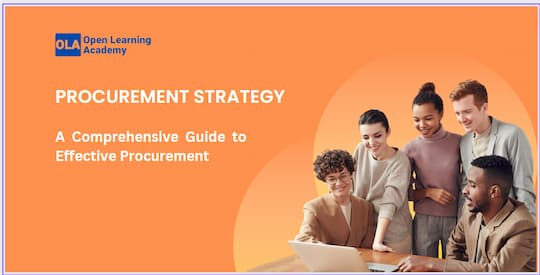Ready to take your procurement strategy to the next level? Our comprehensive guide provides everything you need to know for success. Don't miss out, read now.
Procurement is the process of acquiring goods or services from an external source. The procurement strategy is a plan that organizations develop to determine the most efficient and effective way to acquire goods and services. It is an essential component of any organization's overall strategy. In this article, we will discuss procurement strategy, why it is important, and how to develop an effective one.
What is Procurement Strategy?
Procurement strategy is a plan that outlines how an organization acquires goods and services. It involves identifying the goods and services needed, finding suppliers, negotiating prices, and selecting the best supplier based on a set of criteria. Procurement strategy should be aligned with an organization's overall goals and objectives. It should be designed to reduce costs, increase efficiency, and improve the quality of goods and services acquired.
Why is Procurement Strategy Important?
Procurement strategy is essential because it helps organizations acquire the goods and services they need to operate. An effective procurement strategy can reduce costs, improve efficiency, and ensure that an organization has access to high-quality goods and services. By having a procurement strategy in place, organizations can also manage risk, build strong relationships with suppliers, and ensure that they are complying with relevant regulations and standards.
Developing an Effective Procurement Strategy
Developing an effective procurement strategy involves several steps. These include:
Step 1: Identify Needs
The first step in developing a procurement strategy is to identify the goods and services needed. This involves understanding the organization's goals and objectives, and determining what goods and services are necessary to achieve these goals.
Step 2: Conduct Market Research
Once the goods and services needed have been identified, the next step is to conduct market research to identify potential suppliers. This involves gathering information on suppliers, including their capabilities, prices, and quality of goods and services.
Step 3: Determine the Procurement Method
The next step is to determine the procurement method. This involves deciding whether to use competitive bidding, negotiated procurement, or sole source procurement.
Step 4: Develop a Procurement Plan
The procurement plan outlines the procurement process from start to finish. It includes the timeline, the selection criteria, and the evaluation process.
Step 5: Implement the Procurement Plan
Once the procurement plan has been developed, the next step is to implement it. This involves issuing a request for a proposal or quotation, evaluating proposals or quotations, and selecting the best supplier.
Step 6: Monitor and Evaluate Performance
The final step is to monitor and evaluate the performance of the supplier. This involves tracking delivery times, quality of goods and services, and compliance with contractual obligations.
Best Practices for Procurement Strategy
To develop an effective procurement strategy, organizations should follow these best practices:
- Align procurement strategy with overall goals and objectives
- Conduct regular market research to identify potential suppliers
- Use a structured procurement process
- Select suppliers based on a set of criteria, including price, quality, and delivery time
- Monitor and evaluate supplier performance regularly
- Build strong relationships with suppliers
- Ensure compliance with relevant regulations and standards
- Continuously improve the procurement process
Conclusion
Procurement strategy is an essential component of any organization's overall strategy. It is a plan that outlines how an organization acquires goods and services, and it should be designed to reduce costs, increase efficiency, and improve the quality of goods and services acquired. To develop an effective procurement strategy, organizations should follow best practices, including aligning procurement strategy with overall goals and objectives, conducting regular market research, using a structured procurement process, and continuously improving the procurement process.
FAQs
1. What is the difference between procurement and purchasing?
Procurement is a process that involves acquiring goods and services from an external source. Purchasing, on the other hand, is the act of buying goods or services from a supplier. Procurement is a broader term that includes purchasing as one of its components.
2. What are the different types of procurement methods?
The different types of procurement methods include competitive bidding, negotiated procurement, sole source procurement, and framework agreements. Each method has its advantages and disadvantages, and the choice of procurement method depends on various factors such as the complexity of the requirement, the urgency of the need, and the availability of suppliers.
3. What are the benefits of having an effective procurement strategy?
An effective procurement strategy can help organizations reduce costs, improve efficiency, ensure high-quality goods and services, manage risk, and comply with relevant regulations and standards. It can also help organizations build strong relationships with suppliers and improve their overall performance.
4. How can organizations improve their procurement process?
Organizations can improve their procurement process by following best practices such as conducting regular market research, using a structured procurement process, selecting suppliers based on a set of criteria, monitoring and evaluating supplier performance, building strong relationships with suppliers, and continuously improving the procurement process.
5. How can organizations measure the effectiveness of their procurement strategy?
Organizations can measure the effectiveness of their procurement strategy by tracking key performance indicators such as cost savings, supplier performance, contract compliance, and customer satisfaction. They can also conduct regular reviews and audits to identify areas for improvement and make necessary changes to the procurement process.


